Oxalis triangularis (Purple Shamrock) Plant Care Snapshot
Your Purple Shamrock is a tiny kaleidoscope—purple leaves open for breakfast, close for bedtime, and sparkle when you get the basics right.
Watering
Every 1–2 weeks
Light
Bright, indirect light with a splash of morning sun
Growth Rate
Pops out fresh leaf clusters fast
Care Level
Easy—just respect its short winter “power nap”
Not Pet Friendly
Toxic if chewed—keep above curious paws
Purple Triangle Leaves & Pink Blossoms
Purple Shamrock grows neat clusters of three-pointed, velvet-purple leaves. The color is rich like eggplant on top and soft lilac underneath, giving your shelf a pop of jewel tone without taking much space.
Each day the “wings” open wide for morning light, then fold into little triangles as evening sets in—like the plant is tucking itself into bed.
When the plant feels strong, thin stems lift pale pink flowers just above the foliage, floating like tiny lanterns over the purple carpet. Give it proper care and it will repeat the show again and again.
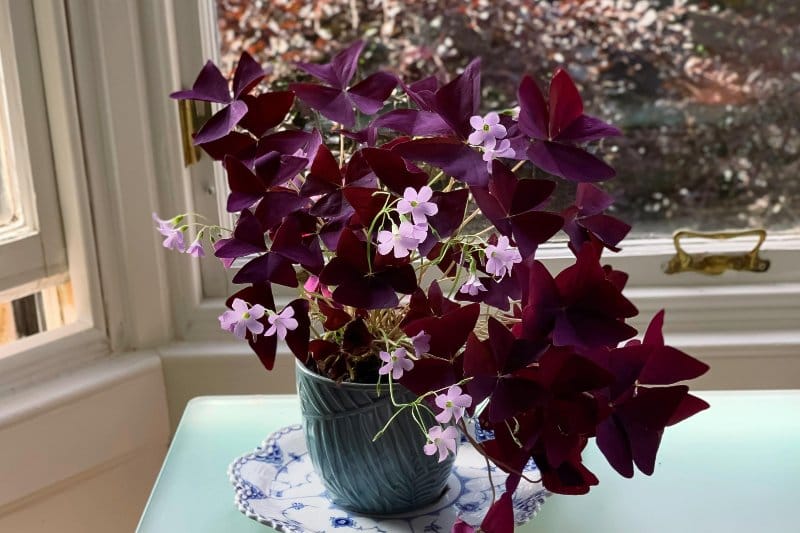
Oxalis Triangularis Plant Care & Growing Requirements
Ready to keep those purple wings flapping? Here are the essentials:
Watering Schedule
Purple Shamrock likes a deep drink, then time to dry—about every 7–12 days in bright rooms. During its winter nap, stop watering until new shoots appear.
Quick Tips
- Water until you see runoff, then empty the saucer.
- Wait for the top knuckle (1 in / 2–3 cm) of soil to feel dry.
- Use room-temperature, chlorine-free water.
- Stop watering once leaves yellow.
- Never let the pot sit in water.
Light & Placement
Bright, indirect light keeps leaves a vivid purple; too much noon sun bleaches, low light fades to green.
Quick Tips
- Give 4–6 hours of filtered sun near an east or bright north window.
- Soften strong rays with a sheer curtain.
- Rotate the pot weekly for even color.
- Slide it closer to the glass in winter.
- A quick sunburn shows as crispy brown leaf edges—shift it back.
Soil & Potting
Loose, slightly acidic mix lets the corms breathe; repot only when crowded—about every 2 years.
Quick Tips
- Blend equal parts all-purpose soil, coco coir, and perlite.
- Always choose a pot with drainage holes.
- Repot in spring, moving up just one size.
- Plant corms ½ in / 1-2 cm below the surface.
- Top-dress yearly with fresh mix instead of over-potting.
Humidity & Temperature
Average indoor air is fine, but 40 %+ humidity and 60–80 °F / 16–27 °C keep growth steady.
Quick Tips
- Group plants or add a pebble tray if your air is dry.
- Keep nights above 50 °F / 10 °C to prevent leaf curl.
- Avoid vents, heaters, and cold drafts.
- Browning tips often signal dry air or a chilly breeze.
- A light mist is okay—just avoid soggy crowns.
Dormancy Nap
Leaves may yellow and die back for 4–6 weeks each winter. That’s normal—let it rest.
Quick Tips
- Trim spent foliage to soil level.
- Move the pot to a cool, dim spot (55–60 °F / 13–16 °C).
- Keep the mix barely moist—no fertilizer.
- Resume bright light and regular watering when new shoots appear.
- Skip repotting during dormancy.
Propagation
Easiest by dividing corm clusters when you repot; each piece becomes a new plant.
Quick Tips
- Lift the root ball and gently separate corm clumps.
- Keep at least 3–4 corms per new pot for a full look.
- Replant at the same depth in fresh mix.
- Water lightly until new growth shows.
- Share extras with friends—instant “plant parent” points.
Fertilizer
Light feeders—half-strength balanced fertilizer once a month in spring and summer; skip during dormancy.
Quick Tips
- Use a 10-10-10 at ¼–½ strength or a mild 2-2-2 at full label rate.
- Water first, then fertilize to avoid root burn.
- Flush the pot every three months to clear salts.
- No feed in fall or while leaves are gone.
- Too much fertilizer = lush green but dull purple—dial it back.
Flower Care
Soft pink-to-white trumpets rise on thin stems when your Shamrock feels bright light and steady care—usually late spring through summer.
Quick Tips
- Bright, indirect sun and a half-strength feed in early spring spur the bloom show.
- Snip spent flowers or whole stalks to keep energy in the leaves (or leave them for the whimsy—no harm done).
- Buds form fastest if the soil stays lightly moist, never soggy.
- Stalks flop just before petals drop—trim then to dodge litter.
- After a big flush, skip fertilizer for a week to let the plant recharge.
Essentials & Stylish Accents
Equip your Purple Shamrock with loose, airy soil, a drainage-smart pot, gentle extra light, and a mild feed—everything you need for vivid leaves and easy blooms.

Miracle-Gro Indoor Potting Mix
A lightweight peat-and-coco blend that drains fast yet holds just enough moisture—perfect for Oxalis corms. Two bags are plenty to refresh several 6″ pots.
Shop on Amazon →
6″ Ceramic Planter & Saucer
High-fired stoneware with a true drainage hole and matching saucer; the 6″ width lets your shamrock spread while keeping shelves drip-free and stylish.
Shop on Amazon →
Full-Spectrum Grow Light
Warm-white LED halos on height-adjustable stakes; built-in 4/8/12-hour timer and four dimmer levels keep leaves deep purple even in low-light corners.
Shop on Amazon →
Espoma Organic Plant Food
Kid- and pet-safe 2-2-2 liquid; add a half-cap to a quart of water once a month in spring and summer for lush foliage and reliable pink blooms.
Shop on Amazon →As an Amazon Associate, I earn from qualifying purchases—thanks for supporting our plant guides!
Foliage & Close-Up Gallery
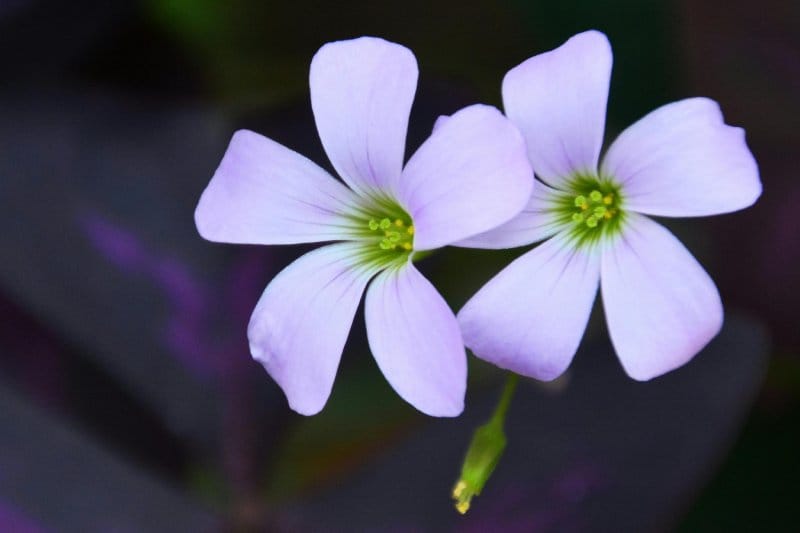
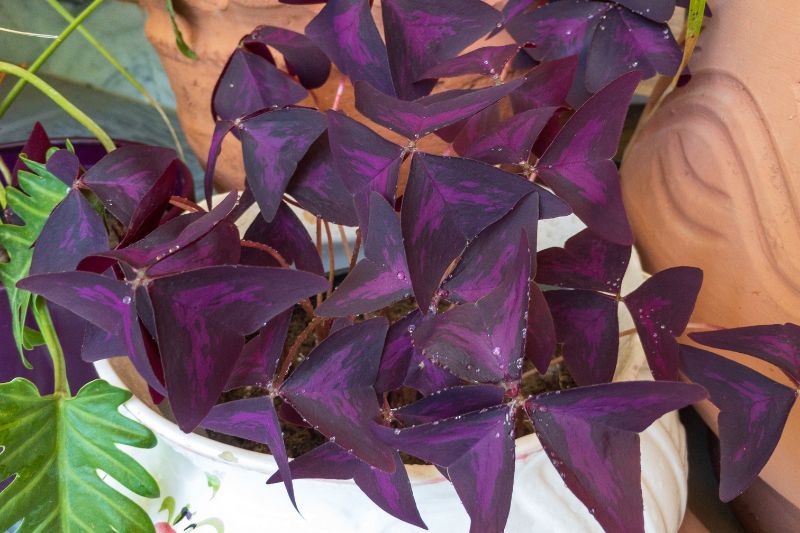
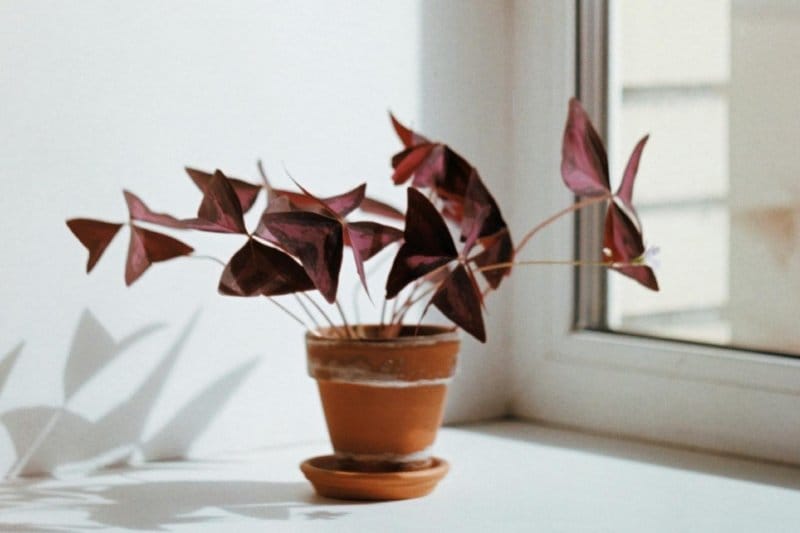
Oxalis Triangularis Got Questions? We've got answers!
How do I care for a purple shamrock in one sentence?
Bright, indirect light + a deep drink when the top knuckle of soil is dry, loose well-draining mix, and a short winter nap—that’s the whole recipe.
Why are the leaves fading or turning green?
Usually not enough light. Slide the pot closer to a bright window or add a small grow-light; the purple pigment (anthocyanin) deepens with stronger, gentler rays.
How much should I water?
Soak until water runs from the drainage hole, then wait until the upper 1 in / 2–3 cm feels dry.
In most homes that’s every 7-12 days; in dormancy, once a month—or not at all if the soil stays slightly moist.
What does dormancy look like, and what do I do?
Leaves yellow, flop, then crisp—totally normal.
Snip them off, park the pot in a cool, dim spot (55–60 °F / 13–16 °C), and keep the mix barely moist for 4–6 weeks.
New shoots signal “wake-up,” so return it to bright light and regular watering.
Is purple shamrock safe around pets?
Nope. All Oxalis species contain soluble oxalates that can upset cats, dogs, and even curious toddlers—display it out of nibble range.
Can I move it outdoors, and will it come back?
Yes—if nights stay above 50 °F / 10 °C and the spot gets morning sun with afternoon shade.
In mild climates the corms can overwinter in the ground and re-sprout each spring; in cold zones, lift the pot (or dig the bulbs) before the first hard frost and store them dry indoors until spring.
Conclusion
Big take-away: keep the soil light, the light bright-but-gentle, and respect that little winter siesta, and your Purple Shamrock will flutter its violet “wings” for you on repeat.
Watching it open each morning and fold each night is half the joy—your daily reminder to pause and breathe.
Craving more two-tone drama? Swing by our roundup of houseplants with green-and-purple leaves and find its perfect color-blocked cousins. Happy planting!

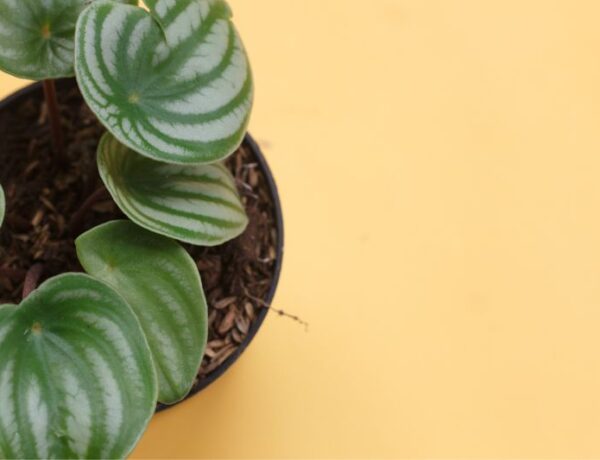
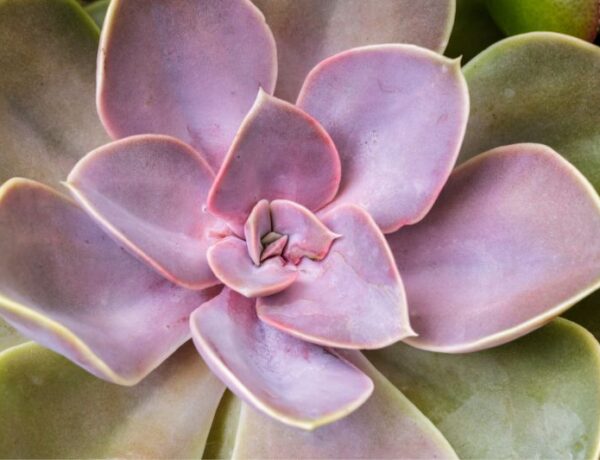
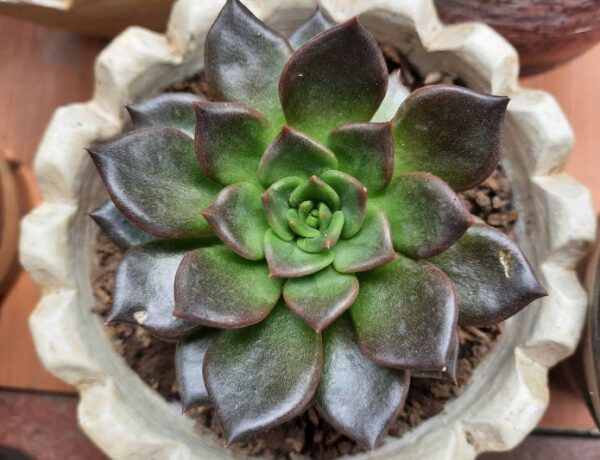


No Comments